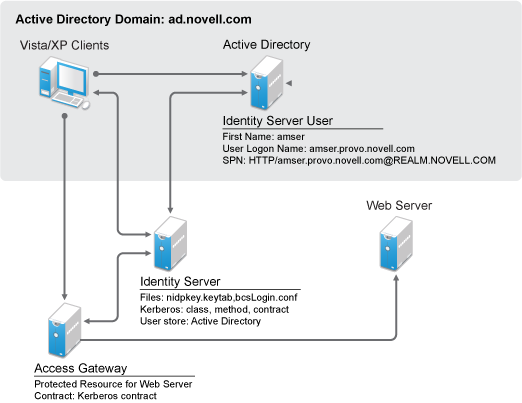5.0 Configuring for Kerberos Authentication
Kerberos is an authentication method that allows users to log in to an Active Directory domain. This authentication method provides them with a token, which an Identity Server can be configured to use as a contract. This provides single sign-on for the user between Active Directory and the Identity Server.
Kerberos authentication is achieved using SPNEGO with GSS-API (JGSS). SPNEGO (RFC 2478 - Simple and Protected GSSAPI Negotiation implementation in Microsoft Windows 2000/XP/2k3/2k8) is a GSSAPI mechanism for extending a Kerberos single-sign-on environment to Web transactions and services. It lets peers determine which GSSAPI mechanisms are shared and lets them select one and establish a security context with it. SPNEGO's most visible use is in Microsoft's HTTP Negotiate authentication mechanism.
The Kerberos module for Access Manager is implemented as additional out-of-the-box authentication mechanism to securely negotiate and authenticate HTTP requests for protected resources. This makes it possible to seamlessly authenticate (single-sign-on) to the Identity Server from enterprise-wide Microsoft Windows Domain Logon.
This section explains how to configure Active Directory, the Identity Server, and the Access Gateway for Kerberos authentication to a protected Web server. Figure 5-1 illustrates this configuration.
Figure 5-1 Example Kerberos Configuration

Kerberos requires the following configuration tasks: